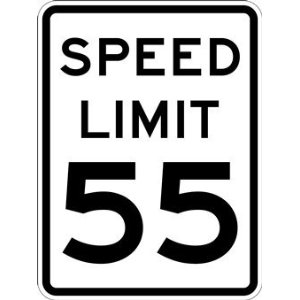On this day in 1974, then President Richard Nixon signed a bill (the Emergency Highway Energy Conservation Act) lowering the maximum U.S. speed limit to 55 MPH in order to conserve gasoline during an OPEC embargo.
The Emergency Highway Energy Conservation Act was a bill in the U.S. Congress that enacted the National Maximum Speed Law.[10] States had to agree to the limit if they desired to receive federal funding for highway repair. The uniform speed limit was signed into law by President Nixon on January 2, 1974, and became effective 60 days later, by requiring the limit as a condition of each state receiving highway funds, a use of the Commerce Clause of the United States Constitution.
The legislation required 55 mph (89 km/h) speed limits on all four-lane divided highways unless the road had a lower limit before November 1, 1973. In some cases, like the New York Thruway, the 50 mph (80 km/h) speed limit had to be raised to comply with the law. The law capped speed limits at 55 mph (89 km/h) on all other roads.
A survey by the Associated Press found that, as of the Wednesday, January 2, 1974:
- 12 states already had maximum speed limits of 55 mph (89 km/h).
- Nine states had maximum speed limits of 50 mph (80 km/h).
- 29 states had to lower limits.
- This includes some states that voluntarily lowered their limits in advance of the federal requirement.
